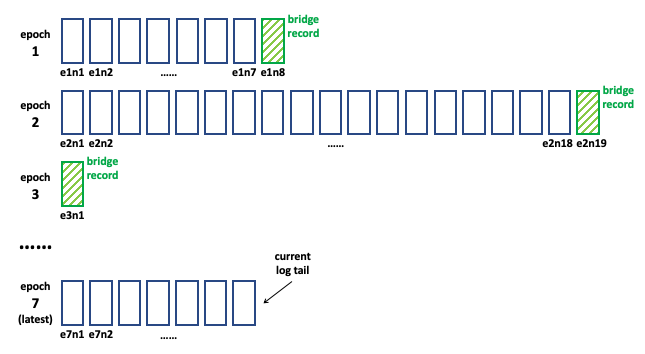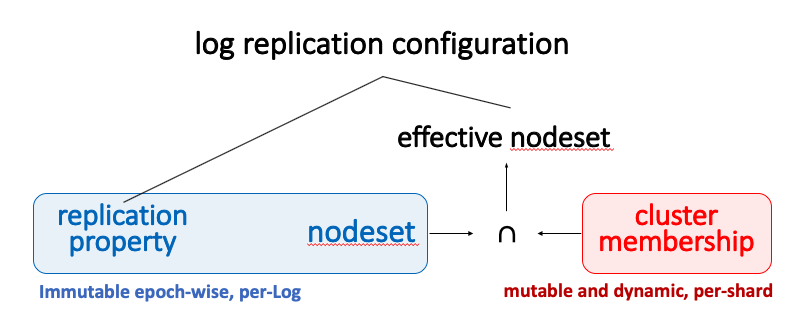Log replication configuration
The sequencer gets an epoch number and log replication configuration from the epoch store when it is activated. Each log has a metadata log associated with it that stores the epoch and replication configuration history.
Replication configuration
A simplified view of the replication configuration looks like this:

Epoch store
The epoch store is a consistent metadata store that provides 2 functions:
- Provide monotonically increasing epoch numbers. During sequencer activation, the epoch store provides epoch numbers through read-modify-write transactions. The sequencer retrieves the current number and bumps the number.
- Store the current replication configuration for each log. It also stores the last clean (fully recovered) epoch (LCE) of the log.
The LogDevice epoch store is currently implemented using Zookeeper.
Log epoch segments
Log reconfiguration prompts a new sequencer to be activated (or an existing one to be reactivated). When a sequencer activates, it gets the new epoch number. It also creates a new epoch segment with an immutable configuration for the log.

Metadata log
Each log is paired with a short metadata log that contains the current and historical replication configuration of the (data) log. Epoch numbers are used as an index into this historical replication configuration. The metadata log is immutable.

Sequencers usually have a cached view of the log's historical metadata content.
Cluster membership
So far we have talked about per-log configuration. But this doesn’t allow for changes to the effective nodeset that may happen later, such as removing nodes from the cluster due to draining or rebuilding. These changes cause the node storage state in the historical epoch configuration to be updated.
Cluster membership describes the storage state for storage nodes that are in the effective nodeset. We use the term storage node, but this could be also “storage device” or “storage shard”.

Unlike the replication properties, cluster membership is mutable and dynamic. It is driven by maintenance activities such as draining and rebuilding. Storage states are, for example, read only, data migration, and read write.
The source of truth for cluster membership is the cluster membership state machine. LogDevice components, including clients and storage nodes, subscribe to membership updates via the state machine. They use the cluster membership and the nodeset for a (log, epoch) to calculate the effective nodeset.

